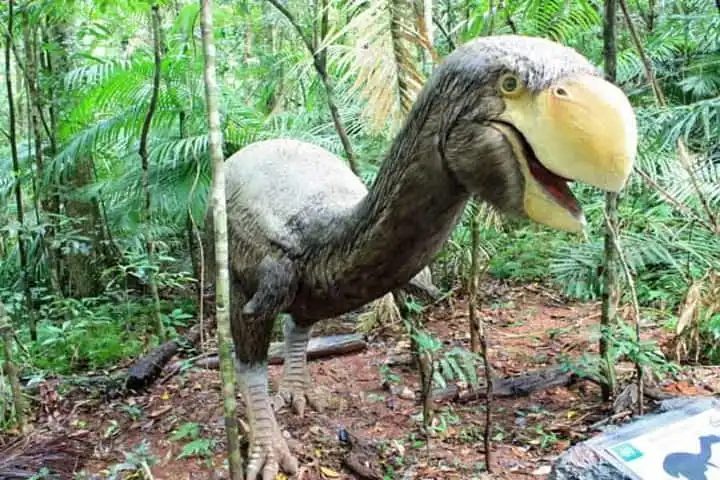The scientific community and historians were delighted when the mystery pertaining to an ancient eggshell and dogging them for the past 41 years was solved. This shell was special since it was from a bird which was big, though now extinct and had a frightening nickname, as per a report in livescience.com.
Let us go back four decades to 1981 when researchers in Australia found charred remains of many eggs. These were found in cooking fires that had been lit by human beings of prehistoric times – going back to 50,000 years ago.
Among these, some eggs were established to be from emus but there were some very big sized ones that came from a bird which wasn’t known. Scientists debated for years as to which bird it belongs to, when at last they were left with two choices. One was a bird which was like a turkey and called Progura and the other was Genyornis which at times due to its large size was called "demon ducks of doom".
With the help of a new analysis — that uses a technology which is cutting-edge and artificial intelligence – they came to the conclusion that the eggs belong to Genyornis newtoni – the continent’s last “thunder bird”.
The details of this study have been published in the Proceedings of the National Academy of Sciences.
Standing at 6.5 feet and weighing about 240 kilograms with its bones, feathers and beak, G. newtoni looked frightening. In an email to Live Science, the study’s lead author Beatrice Demarchi said: “I can imagine that having this mega duck looking down at one should be fairly unnerving!"
Demarchi is an archaeologist at the University of Turin, Italy and studies bones and other organic materials.
In keeping with their huge size, these creatures laid big-sized eggs – each weighed 1.6 kilograms and were the size of a melon. These eggs were the perfect source of protein for the local and indigenous people of Australia whenever they could lay their hands on them. It is believed by researchers that human beings’ excessive intake of these eggs is what led to the extinction of this species.
Even though tiny pieces of fossilised eggs may not look fetching and glamorous like fossilised skulls yet they are invaluable. “Small and mundane things such as eggshells can reveal a lot about what the environment looked like," remarked Demarchi.
Driven by inquisitiveness about the environment in ancient times is what motivated the scientists to look again at the pieces of the egg shells found in 1980. Only this time they used a new technique — protein sequencing.
When pinpointing a specific species, scientists generally use DNA sequencing and prefer it instead of protein sequencing. This is because proteins don’t mutate as fast and randomly as DNA thereby making it tough to find out their genetic signatures. But since they survive 10 times longer than DNA, which means that in older material the chances of plenty of proteins remaining is more than DNA which tends to erode over time. The age and the temperature at which these eggshell pieces were buried, having been cooked in open flame then, a majority of the DNA in them would have deteriorated to be of any use. On the contrary the proteins were in good shape as compared to the DNA.
Following the sequencing of the molecules and then finding out which genes would have produced them, the scientists made use of a special algorithm. This was done to compare what they had found to the genomes of more than 350 living species of birds.
In a statement the study’s co-author Josefin Stiller said that the results of this comparison showed that the eggs were not laid by megapodes — a group of large-footed chicken-like birds – and so by that logic did not belong to the Progura genus.
Stiller works at the University of Copenhagen in Denmark as an evolutionary biologist.
A study like this helps in understanding how human beings have affected natural work and depicts how our ancestors survived in the world and how their diet led to the extinction of some species.
Going beyond these ducks, Demarchi said she and her colleagues want to look “at other big birds from the past and working out their relationships with people at different points in time.”




















